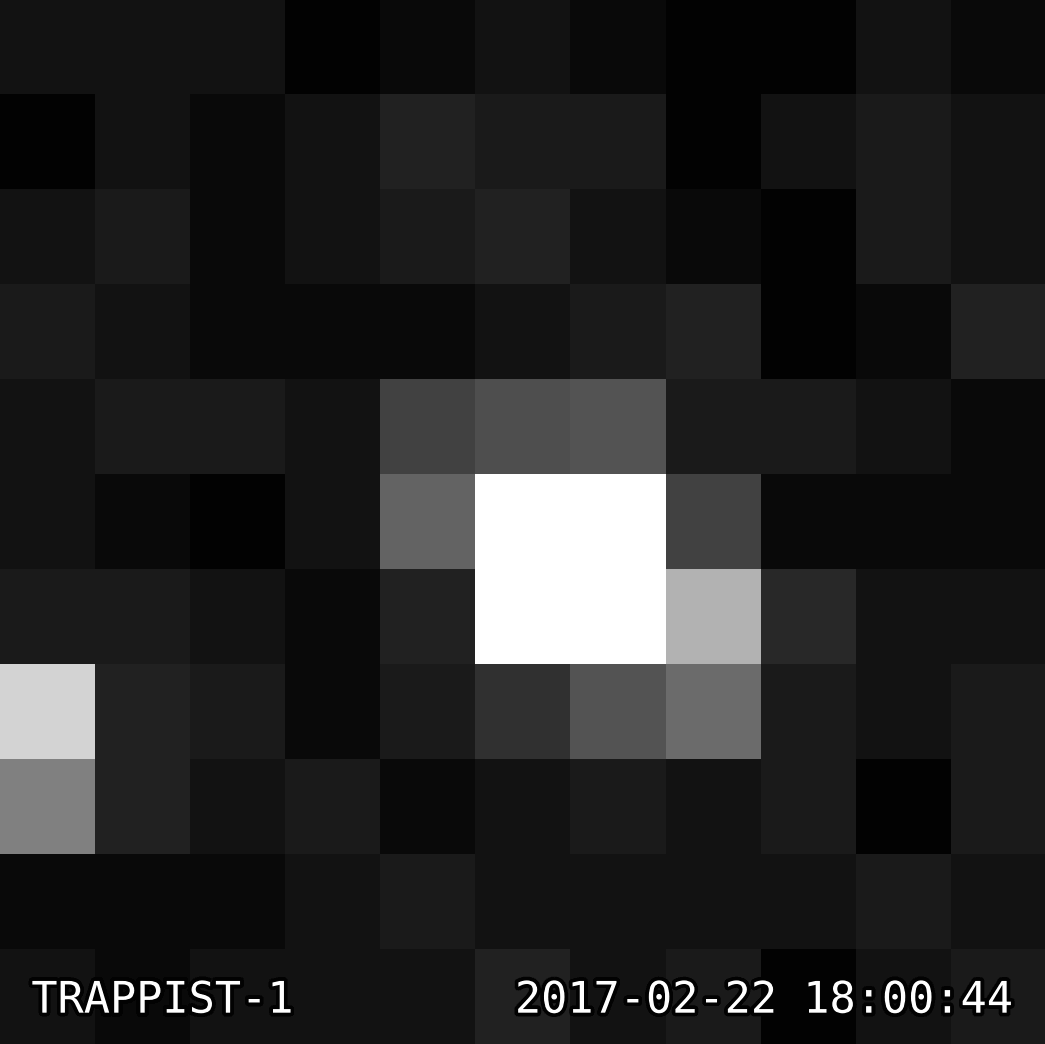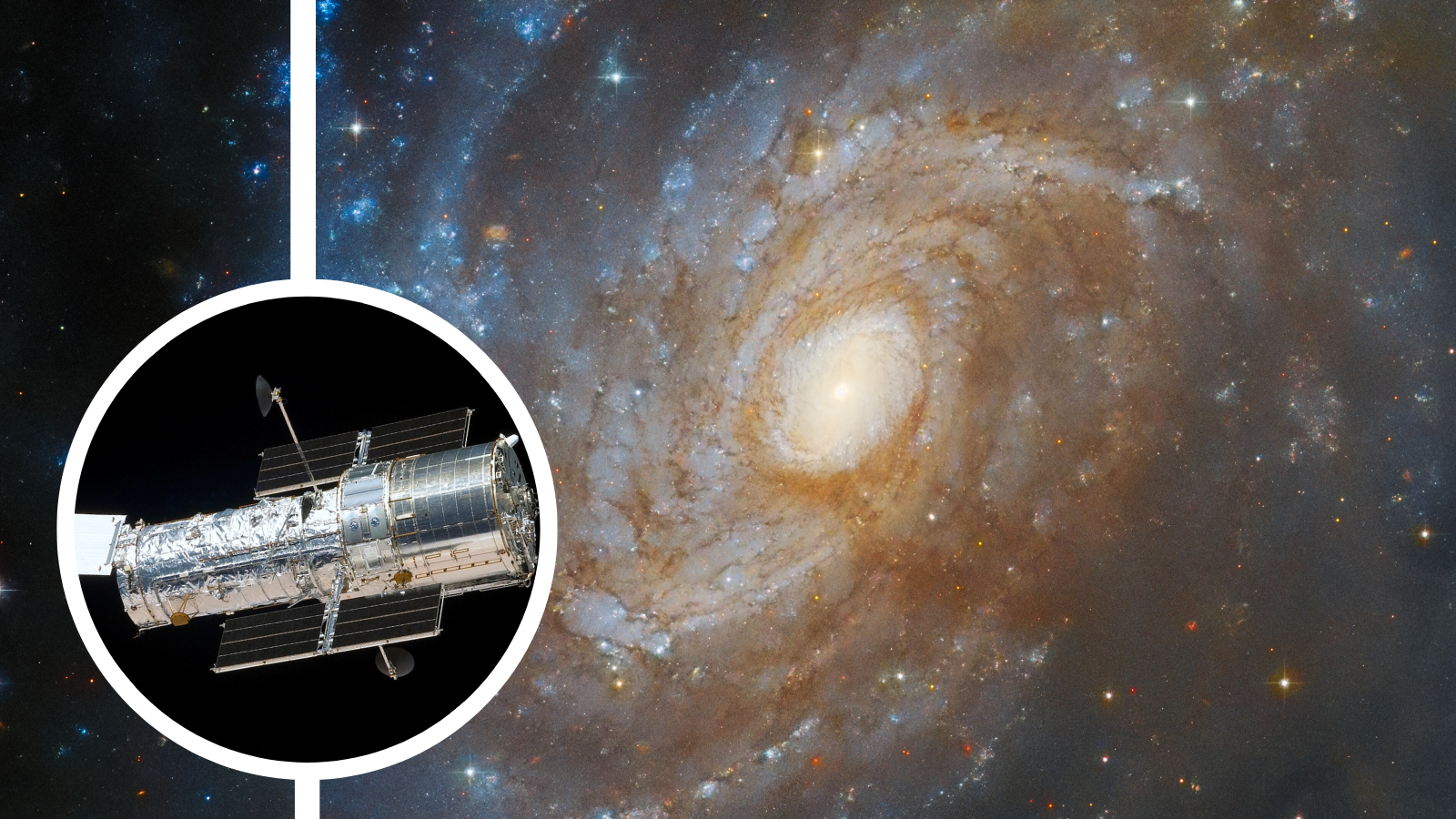Kepler Telescope Sees Pixelated View of 7-Planet Star System

NASA's planet-hunting Kepler Space Telescope captured a very pixelated view of a star system containing seven Earth-size planets.
The TRAPPIST-1 system has planetary scientists feeling like kids on Christmas morning. In addition to having a record-breaking number of rocky, Earth-size worlds, at least three of the Earth-size planets are in the "habitable zone" of the star, where liquid water could potentially exist on a planet's surface.
The animation released by NASA shows the star at the center of the image, and some apparent changes in the brightness of the star, but it does not clearly reveal the presence of any of the seven planets. This animation shows 60 photos taken by Kepler's onboard camera once a minute for an hour; Kepler observed TRAPPIST-1 for a total of 74 days between Dec. 15, 2016, and March 4, 2016.
"Called a target pixel file, the image covers an area of 11 square pixels or 44 square arcseconds of the sky," according to a statement from NASA. "This area is equivalent in size to holding up a grain of sand at arms length towards the sky."
The seven planets around TRAPPIST-1 were discovered by the TRAnsiting Planets and Planetesimals Small Telescope (TRAPPIST), an instrument at the La Silla Observatory in Chile, with help from NASA's Spitzer Space Telescope. That discovery was announced in February.
The Kepler telescope has uncovered thousands of alien planets and planet candidates; by far the most exoplanets of any telescope in history. Kepler studied the TRAPPIST-1 system in early 2016, but scientists did not immediately see evidence of the seven planets. Kepler scientists have now released that raw data to the scientific community for further analysis.
As the seven planets pass in front of their parent star, an observer on Earth will see the star's brightness dip slightly. This is how the Kepler telescope identifies exoplanets, and it's how the TRAPPIST-1 telescopes were able to identify the seven planets.
Get the Space.com Newsletter
Breaking space news, the latest updates on rocket launches, skywatching events and more!
"An Earth-size planet passing in front of a small ultra-cool dwarf star like TRAPPIST-1 creates less than a one percent dip in brightness, and is not visible with the naked eye," according to the statement.
The star at the center of the TRAPPIST-1 system is an ultracool dwarf star, which means it is very dim and relatively cool compared to other stars, including the sun. Even though the TRAPPIST-1 system is relatively close to Earth (39 light-years), that star's dimness made it impossible for the Kepler telescope to immediately it was very difficult to measure the star's drops in brightness that the orbiting planets caused.
Follow Calla Cofield @callacofield. Follow us @Spacedotcom, Facebook and Google+. Original article on Space.com.
Join our Space Forums to keep talking space on the latest missions, night sky and more! And if you have a news tip, correction or comment, let us know at: community@space.com.

Calla Cofield joined Space.com's crew in October 2014. She enjoys writing about black holes, exploding stars, ripples in space-time, science in comic books, and all the mysteries of the cosmos. Prior to joining Space.com Calla worked as a freelance writer, with her work appearing in APS News, Symmetry magazine, Scientific American, Nature News, Physics World, and others. From 2010 to 2014 she was a producer for The Physics Central Podcast. Previously, Calla worked at the American Museum of Natural History in New York City (hands down the best office building ever) and SLAC National Accelerator Laboratory in California. Calla studied physics at the University of Massachusetts, Amherst and is originally from Sandy, Utah. In 2018, Calla left Space.com to join NASA's Jet Propulsion Laboratory media team where she oversees astronomy, physics, exoplanets and the Cold Atom Lab mission. She has been underground at three of the largest particle accelerators in the world and would really like to know what the heck dark matter is. Contact Calla via: E-Mail – Twitter









